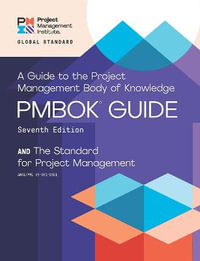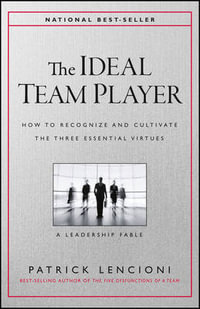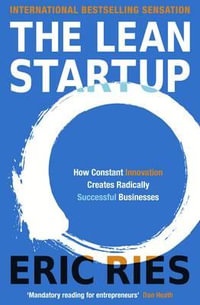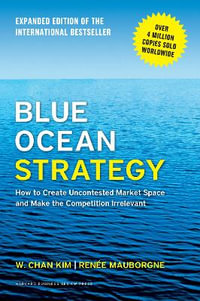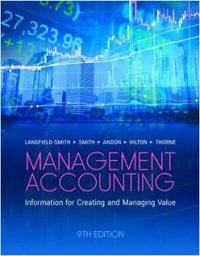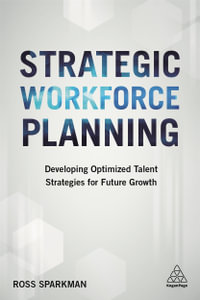Preface xiii
Part 1 Strategy and Execution
1 Operations and Supply Chain Strategy for Competitiveness 2
1.1 Introduction 2
1.2 Operations 5
1.2.1 Systems Perspective 7
1.2.2 Inputs 7
1.2.3 Value-Creation Processes 8
1.2.4 Outputs 8
1.2.5 Control 10
1.2.6 Operations Activities 11
1.2.7 Trends in Operations and Supply Chain Management 11
1.3 Customer Value 14
1.3.1 Costs 14
1.3.2 Innovativeness 14
1.3.3 Functionality 15
1.3.4 Quality 15
1.3.5 Customization 16
1.3.6 Responsiveness 18
1.4 Strategy and Competitiveness 20
1.4.1 Global Trends 20
1.4.2 Strategy 21
1.4.3 Strategic Frameworks 22
1.4.4 Core Capabilities 29
1.5 Productivity 31
1.5.1 Improving Productivity Rates 32
2 Executing Strategy: Project Management 40
2.1 Introduction 41
2.2 Defining a Project 44
2.3 Planning the Project 45
2.3.1 The Project Portfolio 45
2.3.2 The Project Life Cycle 48
2.3.3 Projects in the Organizational Structure 49
2.3.4 Organizing the Project Team 50
2.3.5 Project Plans 51
2.3.6 Change Management 54
2.4 Scheduling the Project 55
2.4.1 Project Scheduling with Certain Activity Times: A Process Improvement Example 55
2.4.2 Project Scheduling with Uncertain Activity Times 58
2.4.3 Project Management Software Capabilities 63
2.4.4 Goldratt’s Critical Chain 63
2.4.5 Agile Project Management 67
2.5 Expediting the Project: Trade-Offs Between Cost and Time 68
2.6 Controlling the Project: Cost and Performance 72
Part 2 Product and Process Design
3 Product and Process Planning 82
3.1 Introduction 82
3.2 Product Design 85
3.3 Forms of Transformation Systems 88
3.3.1 Continuous Process 88
3.3.2 Flow Shops 89
3.3.3 Job Shops 95
3.3.4 Cellular Production 99
3.3.5 Project Operations 103
3.4 Selection of a Transformation System 104
3.4.1 Considerations of Volume and Variety 104
3.4.2 Product and Process Life Cycle 106
3.4.3 Service Processes 108
4 Capacity and Scheduling 119
4.1 Introduction 119
4.2 Long-Term Capacity Planning 121
4.2.1 Capacity Planning Strategies 123
4.3 Effectively Utilizing Capacity Through Schedule Management 128
4.3.1 Scheduling Services 129
4.4 Short-Term Capacity Planning 134
4.4.1 Process-Flow Analysis 134
4.4.2 Short-Term Capacity Alternatives 139
4.4.3 Capacity Planning for Services 141
4.4.4 The Learning Curve 143
4.4.5 Capacity and Waiting 145
4.4.6 Measuring the Performance of the Basic Queuing System 148
4.4.7 Human Aspects and the Psychology of Waiting 150
5 Strategic Management of Supply Chains 155
5.1 Introduction 155
5.2 Defining SCM 158
5.3 Supply Chain Strategy 160
5.3.1 Strategic Need for SCM 161
5.3.2 Measures of Supply Chain Performance 163
5.4 Supply Chain Design 165
5.4.1 Logistics 166
5.5 Sourcing Strategies and Outsourcing 174
5.5.1 Purchasing/Procurement 175
5.5.2 Supplier Management 177
5.6 Role of Information Technology 179
5.6.1 ERP 180
5.6.2 Customer Relationship Management Systems 182
5.6.3 Block Chain Technology 183
5.7 Successful SCM 184
5.7.1 Closed-Loop Supply Chains and Reverse Logistics 184
Supplement A—The Beer Game 191
6 Supply Chain Planning and Analytics 195
6.1 Introduction 196
6.2 Importance of Supply Chain Planning and Analytics 197
6.3 Demand Planning 199
6.3.1 Forecasting Methods 199
6.3.2 Factors Influencing the Choice of Forecasting Method 201
6.3.3 Time Series Analysis 201
6.3.4 Causal Forecasting with Regression 211
6.3.5 Assessing the Accuracy of Forecasting Models 217
6.4 Sales and Operations Planning 218
6.4.1 Aggregate Planning Strategies 219
6.4.2 Determining the Service Level: An Example Using the Newsvendor Problem 220
6.4.3 Collaborative Planning, Forecasting, and Replenishment 223
6.5 Inventory and Supply Planning 223
6.5.1 Functions of Inventories 224
6.5.2 Forms of Inventories 225
6.5.3 Inventory-Related Costs 226
6.5.4 Decisions in Inventory Management 227
Supplement A—The Economic Order Quantity Model 232
Part 3 Managing and Improving the Process
7 Monitoring and Controlling the Processes 240
7.1 Introduction 240
7.2 Monitoring and Control 242
7.3 Process Monitoring 243
7.3.1 Stages of Operational Effectiveness 243
7.3.2 Balanced Scorecard 245
7.3.3 The Strategy Map 246
7.3.4 ISO 9000 and 14000 247
7.3.5 Failure Mode and Effect Analysis (FMEA) 248
7.4 Process Control 249
7.4.1 Statistical Process Control 250
7.4.2 Constructing Control Charts 254
7.5 Controlling Service Quality 257
7.5.1 Service Defections 258
8 Process Improvement: Six Sigma 266
8.1 Introduction 266
8.2 Approaches for Process Improvement 269
8.3 Business Process Design (Reengineering) 270
8.4 Six Sigma and the DMAIC Improvement Process 273
8.4.1 Example Six Sigma Project 274
8.5 The Define Phase 276
8.5.1 Process Mapping 276
8.5.2 Benchmarking 277
8.5.3 Quality Function Deployment (QDF) 278
8.5.4 The Kano Model 281
8.6 The Measure Phase 282
8.6.1 Defects per Million Opportunities (DPMO) 283
8.6.2 Measurement Systems Analysis 285
8.7 The Analyze Phase 287
8.7.1 Brainstorming 288
8.7.2 Cause-and-Effect Diagrams 290
8.7.3 Process Capability Analysis 290
8.8 The Improve Phase 293
8.8.1 Design of Experiments 293
8.9 The Control Phase 295
8.10 Six Sigma in Practice 295
8.10.1 Six Sigma Roles 295
8.10.2 Becoming Certified 296
8.10.3 The Need to Customize Six Sigma Programs 296
9 Process Improvement: Lean 302
9.1 Introduction 302
9.2 History and Philosophy of Lean 306
9.2.1 Traditional Systems Compared with Lean 307
9.3 Specify Value and Identify the Value Stream 311
9.3.1 Identify the Value Stream 312
9.4 Make Value Flow 316
9.4.1 Continuous Flow Manufacturing 316
9.4.2 The Theory of Constraints 317
9.5 Pull Value Through the Value Stream 320
9.5.1 Kanban/JIT in Services 321
9.6 Pursue Perfection 321
9.6.1 5S 322
9.6.2 The Visual Factory 322
9.6.3 Kaizen 322
9.6.4 Poka Yoke 323
9.6.5 Total Productive Maintenance 323
9.7 Benefits of Lean and Lean Six Sigma 323
9.7.1 Lean Six Sigma 324
Cases 329
BPO, Incorporated: Call Center Six Sigma Project 329
Peerless Laser Processors 342
General Micro Electronics Inc.: Semiconductor Assembly Process 347
Heublein: Project Management and Control System 360
D. U. Singer Hospital Products Corp. 371
Automotive Builders Inc.: The Stanhope Project 375
Area Under the Normal Distribution 382
Glossary 384
Index 389

